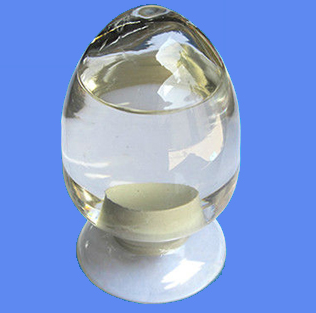| Identification | More | [Name]
Triethylene glycol dimethacrylate | [CAS]
109-16-0 | [Synonyms]
METHACRYLIC ACID TRIETHYLENEGLYCOL DIESTER
TRIETHYLENE GLYCOL DIMETHACRYLATE
1,2-bis(2-(methacryloyloxy)ethoxy)ethane
1,2-Bis[2-(Methacryloyloxy)ethoxy]ethane
2-(2-[2-(Methacryloyloxy)ethoxy]ethoxy)ethyl 2-methylacrylate
2-Propenoicacid,2-methyl-,1,2-ethanediylbis(oxy-2,1-ethanediyl)ester
Ethylenebis(oxyethylene) methacrylate
ethylenebis(oxyethylene)methacrylate
Methacrylic acid, diester with triethylene glycol
methacrylicacid,diesterwithtriethyleneglycol
NK Ester 3G
nkester3g
Polyester TGM-3
polyestertgm3
polyestertgm-3
TEDMA
TGM 3
TGM 35
TGM 3PC
TGM 3S | [EINECS(EC#)]
203-652-6 | [Molecular Formula]
C14H22O6 | [MDL Number]
MFCD00008591 | [Molecular Weight]
286.32 | [MOL File]
109-16-0.mol |
| Safety Data | Back Directory | [Hazard Codes ]
Xi | [Risk Statements ]
R36/37/38:Irritating to eyes, respiratory system and skin . | [Safety Statements ]
S26:In case of contact with eyes, rinse immediately with plenty of water and seek medical advice .
S28:After contact with skin, wash immediately with plenty of ... (to be specified by the manufacturer) . | [RIDADR ]
UN 3334 | [WGK Germany ]
1
| [RTECS ]
OZ4100000
| [F ]
8-19 | [TSCA ]
TSCA listed | [HS Code ]
29161900 | [Hazardous Substances Data]
109-16-0(Hazardous Substances Data) | [Toxicity]
LD50 oral in rat: 10837mg/kg |
| Questions And Answer | Back Directory | [Description]
Triethylene glycol dimethacrylate is used as a cross-linking agent in the synthesis of poly (methacrylic acid-g-ethylene glycol) hydrogels which shows large changes in swelling due to changes in pH, temperature and solvent composition. They are also used as divinylic methacrylic monomers which are widely used to form copolymers with divinylbenzene (DVB) and glycidyl methacrylate (GMA) or hydroxyethyl methacrylate (HEMA) comonomers. As a monomer, it is typically used in dental resin materials that can cause specific stress responses in eukaryotic cells. It commonly used to aesthetically restore the structure and function of teeth impaired by caries, erosion, or fracture.
It is cytotoxic via apoptosis, induce genotoxic effects, and delay the cell cycle. It also influences the response of cells of the innate immune system, inhibit specific odontoblast cell functions, or delay the odontogenic differentiation and mineralization processes in pulp-derived cells including stem cells. It is also used as a diluent co-monomer in dimethacrylate based dental composites as well as being used as a branching agent in the atom transfer radical polymerization (ATRP) of styrene.
| [Application]
Triethylene glycol dimethacrylate (TEGDMA) is a resin monomer widely used in the composition of dentin bonding agents and composite resins to restore teeth structures impaired by caries and/or fractures. However, resin monomers can be released into the oral environment and can trigger hazardous biological effects on oral tissues. The release of the resin monomers due to degradation and incomplete polymerization can occur hours or days after the treatment. Due to its hydrophilic nature, hydrolysis plays an important role in the degradation processe of TEGDMA. Chemical interactions with oral fluids and mechanical influences may also cause the degradation of resin monomers. Direct contact or diffusion of resin monomers through the dentinal tubules creates ways of interaction between dental pulp tissue and resin monomers. Dentin thickness and the severity of caries lesions are important factors in determining the amount of resin monomers interacting with dental pulp tissue. TEGDMA has been reported to cause cytotoxicity, impaired cellular functions, pulpal inflammatory responses, and changes in the immune system. In addition, TEGDMA may reduce the mineralization capacity of dental pulp cells by decreasing the expression of the mineralization related genes pathways and causing adverse effects.
| [Reference]
Krifka, S, et al. "A review of adaptive mechanisms in cell responses towards oxidative stress caused by dental resin monomers. " Biomaterials 34.19(2013):4555-4563.
|
| Hazard Information | Back Directory | [Chemical Properties]
Colorless liquid

| [Uses]
Esters of acrylic acid and methacrylic acid, more commonly known as acrylates and methacrylates are key raw materials in the coatings and printing industry, and in food packaging. | [Uses]
Triethyleneglycol dimethacrylate is a methacrylic monomer for use as cross-linking agent for adhesives and dental restorative materials. | [General Description]
Triethylene glycol dimethacrylate (TEGDMA) is a hydrophilic, low viscosity, difunctional methacrylic monomer employed as a crosslinking agent. | [reaction suitability]
reagent type: cross-linking reagent
reaction type: Polymerization Reactions |
|
|